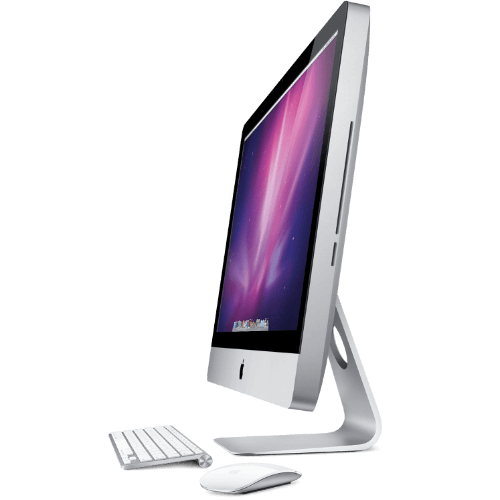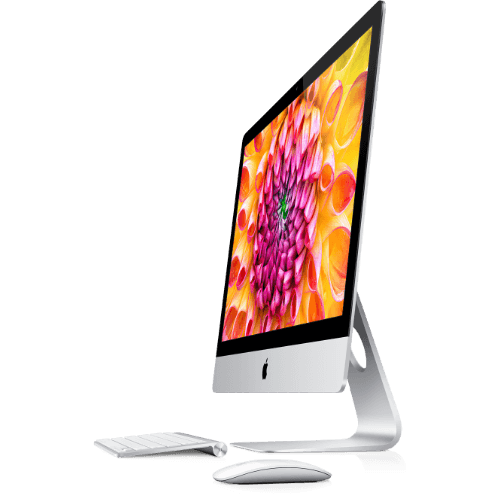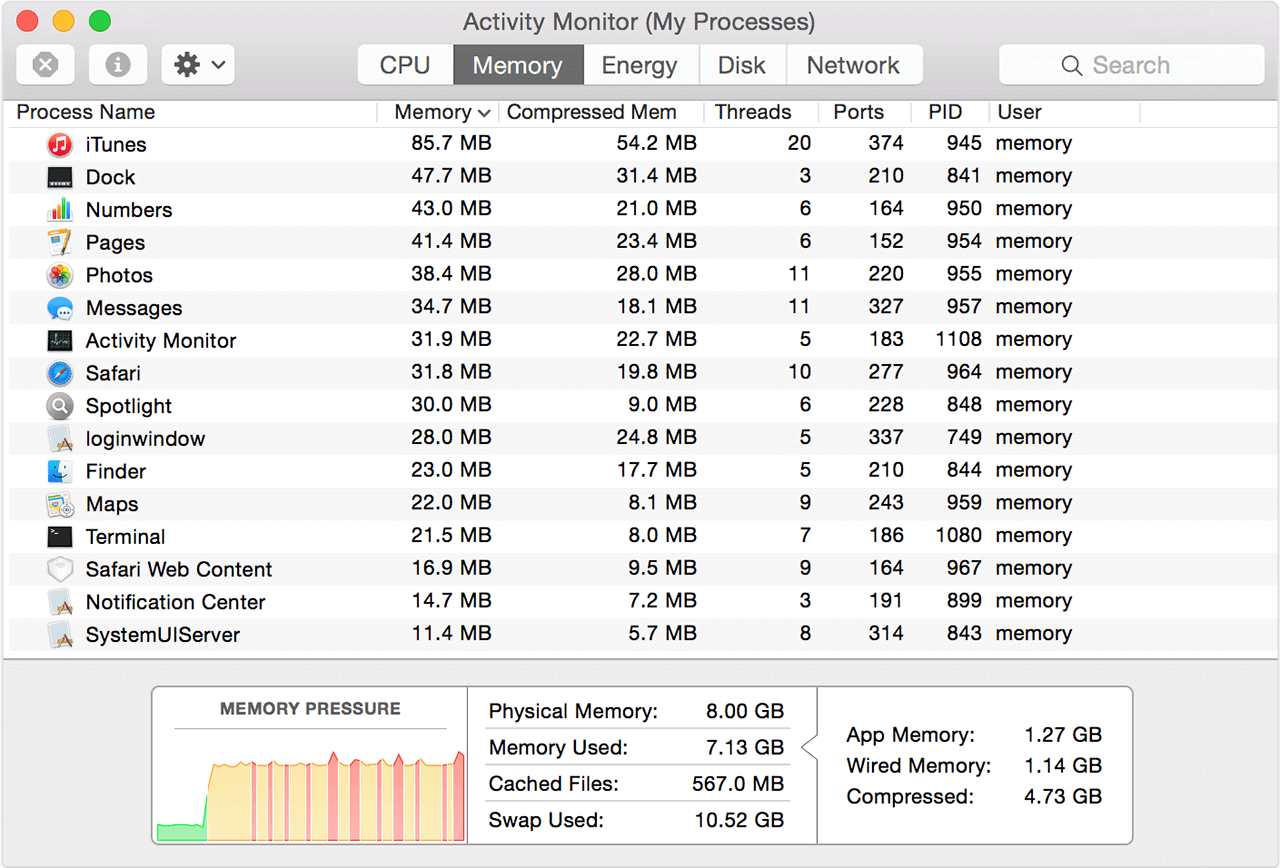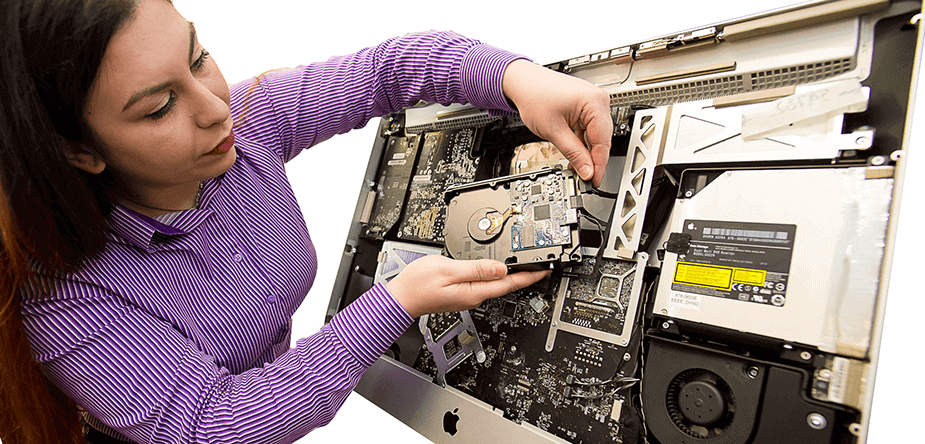At SimplyFixIt, we know Macs. We've been working on them since 1996, and our team are certified by Apple. We offer a wide range of repairs, and for almost all we're cheaper than the Apple store.
How is SimplyFixIt cheaper than Apple?
We offer cheaper prices than Apple because our business is fixing computers. Apple would probably prefer you to buy a new model if the screen is broken, so they price their repairs accordingly. The price difference can be huge. On some current models of iMac, SimplyFixIt was over £200 cheaper than Apple for the same repair. Plus, we were able to return the Mac to the customer faster than Apple said that they could. When you book an appointment with SimplyFixIt, we aim to fix your Mac the very same day.
Choose your repair below, and see how we can help you today.
Check your Serial Number for free.
Enter your iMac’s serial number in the box above to find out what model it is.
In the About This Mac window
With most versions of macOS, you can find your computer’s serial number and model information in the About This Mac window.
Click on the Apple () logo on the top left of your screen, then "About This Mac". The window that appears lists your computer’s model name, for example, iMac (27-inch, Late 2013), and the serial number. Your serial number can really help SimplyFixIt to offer you personalised advice on repairs or upgrades for your model.
iMac Screen Repairs
If the screen on your iMac has broken, don't despair. We can fix it quickly, and we guarantee to be cheaper than the Apple store. We have Apple Mac Certified technicians available at each of our locations, so you can either visit us today, book an appointment to visit later this week, or even ship your iMac to us. We use the same parts as Apple too. It’s the same service – simply cheaper and faster.
There are a number of different models of iMac, each of which takes a different screen. We are able to fix any model of iMac that has been released since 2008, right up to the latest 4K and 5K models. We’ll save you money on every model.
iMac 2008 - 2011
For a slightly older model of iMac, from 2008 until 2011, the screen has two separable layers. That means we can replace the front glass on its own. Normally we can do these repairs the same day. Get in touch using the Contact Form below and we'll get back to you with a quote. Remember to include the serial number, so that we can check which model of iMac you have.

iMac 2012 and later
In 2012 Apple changed their design. The newer, thinner iMac have a really slim chassis and screen design. These are much higher quality, but the layers of the screen are not separable. So if it breaks it can be a bit more expensive. As prices on this model are volatile, it's best to get in touch using the Contact Form below. Remember to include the serial number of your iMac, so we can check the exact model.

Why is my iMac so slow?
Believe it or not, you are not alone. It's the top suggestion on Google search, and there are over 7 million results. People are looking for the same answers as you are.

We help more than 250 Mac users every month and of those customers who a left a review, 96% of them gave us 5 star reviews. That's because we know Macs. We've been working with them for years, and make sure that our technicians are certified by Apple so that they know Macs at least as well as the technicians who work at the Apple Store.
There's not one single reason that Macs get slow, and there are lots of things you can try at home to boost the performance too. We'll show you a few things to try, but if you find that they haven't helped, it's time to let the experts take over. You don't need an appointment, so you can visit a SimplyFixIt store today. If you'd like to know more before you make the journey along, you can use the Contact Form below to get some extra help.
What can I do at home to improve the performance of my iMac?
The first step is to identify if perhaps there is just too much going on. Here are some steps you can follow to access the Apple Activity Monitor. It will break each task down by how taxing it is being on your processor at any given time.
Apps normally use a larger percentage of the CPU when doing tasks that require intensive calculations, such as video editing. But CPU use should decrease when the task is finished, and it should stop entirely when the app is no longer open. Any process except kernel_task (kernel_task is to help manage CPU temperature) that is consistently using more than 70 percent of your CPU is putting a significant load on the CPU and could be malfunctioning. 1. Open Activity Monitor, then choose View > All Processes.
2. Click the top of the "% CPU" column to sort by the percentage of CPU capability used by each process.

Quit any malfunctioning processes
If you can't quit an application normally, because it has crashed, you can use Activity Monitor to force it to quit. Make sure you save any work you have open first, just in case, then select the process in Activity Monitor and choose View > Quit Process.
Use Activity Monitor to check memory (RAM) activity
The Memory pane shows information about how memory is being used by each application:
Memory Pressure: The Memory Pressure graph helps illustrate the availability of memory resources: o Green: All good. You have plenty RAM available. o Yellow: You have RAM available, but certain tasks are working hard. o Red: Memory resources have depleted. This is the most important indicator that your Mac may need to be upgraded with more RAM. Physical Memory: This is how much memory you have installed in your iMac. Memory Used: The total amount of memory currently used by all apps and macOS processes. If this figure is near the total amount of RAM available, you probably need to consider upgrading.

If your CPU is not being taxed, and your memory pressure is in the green, but your Mac is still slow - then this is not the problem. This indicates that both of these parts are capable at running faster, but they are not getting as much information as they’d like from your storage drive. We can upgrade your storage drive to something much quicker, which will really allow your CPU to take off. We are so confident you will love the new speed of your Mac, that if you don’t we’ll offer a no quibbles money back guarantee*
*The iMac must be returned within 14 days. We will swap the drive back for your old one and refund the money that you paid for the drive.
Is your iMac not loading Mac OS?
If your iMac powers up, but it fails to load Mac OS, we can help. There are a few common symptoms, but one we see a lot is the flashing folder and question mark.
This indicates that your iMac cannot see Mac OS or load the files correctly. A lot of people are quick to assume that this must mean that the hard drive is faulty - after all, that is where the files are stored. At SimplyFixIt, we run thorough hardware diagnostics to be absolutely certain - we won't charge you to replace a part that is in perfect health. And we often see similar issues due to a corrupt directory, which is cheaper to fix.
We also know how important your data can be. Our Mac certified technicians will offer data recovery too, even from a faulty hard drive. If you'd like more information, you can use the Contact Form below to get some extra help. Or pop in to your nearest SimplyFixIt branch. We'd love to say hi, and you don't need to book an appointment.
How we significantly boost the performance of your iMac
If you know which model of iMac you have, head over to https://simplyfixit.co.uk/apple-repairs/imac/apple-imac-upgrades/
We have a complete list of compatible upgrades for all iMac computers. Or if you'd like general information only, keep reading...
RAM Upgrades
There are two types of "memory" in a computer, RAM (Random Access memory) and drive storage. Without getting too technical, RAM gives your computer a high-speed temporary work space. It's where apps and data live while you are actively using them. If you have more RAM it means that your iMac will normally feel faster as you are using apps, especially if you are opening multiple apps, or web browser tabs, at the same time.
The minimum amount of RAM that Apple puts into an iMac now is 8GB of RAM. Up to very recently, there were more 4GB iMacs out there, but I would say that if you have less than 8GB, you will see a performance boost from increasing your RAM.
Fusion Drives and Flash Storage
If RAM is for storing apps and data when they are in use, the "hard drive" in your iMac is for storing everything permanently. It stores all your pictures, emails, apps and any other data. I say "hard drive", but the more modern technology is a "solid state drive" or "flash drive" in Apple parlance.
In general terms, if you have a hard drive in your computer, and you upgrade to a Flash Drive, then you will see a huge performance difference. Your iMac will start up much faster, apps will load quicker and just generally, your computer will feel a lot more responsive. The Apple Certified Technicians at SimplyFixIt can give you advice on what is the best size Flash Drive for your iMac.

Why not just keep the same size?
It may be that your current hard drive is nearly at full capacity, and simply swapping over to a Flash Drive at the same size won't help. It could be that you don't use all the space on your hard drive, and never will, and therefore buying a Flash Drive of the same size would be a waste of money. That's the thing about Flash Drives; they cost more than hard drives. They are cheaper than ever before, and definitely represent the best value performance boost for an iMac, but if you needed a 512GB or a 1TB Flash Drive, it is definitely still an expensive upgrade.
Fusion Drives
If you do have a lot of data, 1TB or more, and don't want to invest in a flash drive of that capacity, there are still options for you. We can fit a Fusion Drive to your computer. This is a combination of hard drive and flash drive, which macOS is able to use as one single drive. It typically gives a boost of 3.5x performance when working on large files. Even just starting your iMac should be a lot faster, maybe even twice as fast.
Drive technology comparisons
| Read or write | Megabytes per second |
|---|---|
| Flash Drive | |
| Write Speed | 208 MB/s |
| Read speed | 140 MB/s |
| Fusion Drive | |
| Write speed | 127 MB/s |
| Read speed | 129 MB/s |
| Hard Drive | |
| Write speed | 38 MB/s |
| Read speed | 25 MB/s |
| Read or write | Megabytes per second |
|---|---|
| Flash Drive | |
| Write Speed | 440 MB/s |
| Read speed | 477 MB/s |
| Fusion Drive | |
| Write speed | 325 MB/s |
| Read speed | 482 MB/s |
| Hard Drive | |
| Write speed | 173 MB/s |
| Read speed | 174 MB/s |